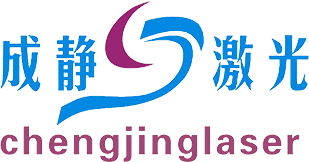Five advantages of laser cleaning compared to traditional cleaning
There are various cleaning methods for traditional cleaning, including mechanical friction cleaning, chemical corrosion cleaning, liquid solid strong impact cleaning, high-frequency ultrasonic cleaning, and other traditional cleaning methods.
Mechanical friction cleaning, although highly clean, can easily damage the substrate; Chemical corrosion cleaning belongs to stress free cleaning, but the pollution is relatively serious; Liquid solid strong impact cleaning has high flexibility, but requires a large amount of consumables during use, so the cost is relatively high. The waste liquid generated from cleaning is also difficult to treat and causes serious environmental pollution; Liquid solid strong impact cleaning has a good cleaning effect, but there are limitations on the size of the cleaned workpiece. Large workpieces are not suitable for ultrasonic cleaning, and it is also necessary to keep the workpiece dry after cleaning. These traditional cleaning methods have their advantages and disadvantages, but in today's country where environmental protection regulations are becoming increasingly strict and people's awareness of environmental protection and safety is increasing, how to find cleaner and non damaging cleaning methods is a problem that we have to consider. Some traditional cleaning methods need to be updated and replaced.

Laser cleaning has the characteristics of no grinding, non-contact, no thermal effects, and is suitable for cleaning objects of various materials. It is considered the most reliable and effective solution. Meanwhile, laser cleaning can solve problems that cannot be solved by traditional cleaning methods. Laser cleaning technology has advantages that traditional cleaning methods cannot match. With the continuous improvement of technology and the mass production of equipment, laser cleaning technology will undoubtedly play an important role in the cleaning industry.
Compared with traditional cleaning methods such as mechanical friction cleaning, chemical corrosion cleaning, liquid solid strong impact cleaning, and high-frequency ultrasonic cleaning, laser cleaning has the following 5 obvious advantages:
1. Green cleaning: No chemical agents are used, and the waste after cleaning is solid and harmless powder, which can completely solve the environmental pollution problem caused by chemical cleaning.
2. Non destructive cleaning: Laser cleaning is non abrasive, non-contact, and has no thermal effects. It does not generate mechanical forces on the cleaned object, does not damage the surface of the object, does not damage the substrate, and does not produce secondary pollution.
3. Low cost cleaning: The laser cleaning system has a relatively high initial investment, but can be used stably for a long time, with a service life of up to 10 years. It has low operating costs, fast speed, high efficiency, saves time, and can quickly obtain investment returns. In the long run, the cost is lower than traditional cleaning methods.
4. Precision cleaning: Laser cleaning can remove various types of pollutants from the surface of various materials, achieving cleanliness levels that conventional cleaning cannot achieve. And it can also selectively clean the pollutants on the material surface without damaging it.
5. Automated cleaning: Laser can be transmitted through optical fibers and paired with robots to achieve long-distance operation. It can clean complex structural parts that are difficult to reach by traditional methods. This feature also ensures the safety of operators in some dangerous places. Can be equipped with automated equipment to achieve automated cleaning.
-
Laser rust remover removes oxide layer on metal surface
Laser rust removal is a new type of environmentally friendly cleaning method that can quickly remove oil stains, rust layers, paint layers, oxide layers, etc. on metal and non-metallic surfaces. The cleaning method of laser rust removal is non-contact with the workpiece and non-grinding, so it will not cause damage to the workpiece. It can be seen that where the laser beam has been irradiated, the adhesion on the metal surface has been removed, revealing the true color of the workpiece. Even in the face of uneven workpieces, laser rust removal can easily achieve the cleaning effect. -
Two advantages of industrial laser cleaning machines
There are various cleaning methods for industrial equipment at present, but most of them use chemical agents and mechanical methods for cleaning. Of course, these two methods also have varying degrees of drawbacks. Especially when the whole society places great emphasis on environmental protection, using chemical cleaning will inevitably generate a large amount of pollution. The cost of using mechanical methods is too high, so it is necessary to use industrial laser cleaning at this time. What are the advantages of this equipment? -
Chengjing Laser Cleaning Machine Helps Upgrade the Cleaning of New Energy Vehicles
In recent years, the rapid improvement of new energy vehicles has driven the rapid development of the new energy industry. In the rapid development of new energy vehicles, higher, newer, and more stringent requirements have been constantly put forward. The cleaning of new energy vehicle components is a new process that is born to adapt to new application requirements, and it must be continuously improved to adapt to the new market environment. -
Will laser cleaning damage the parts themselves?
Steel can be said to be ubiquitous in daily life, but it has a disadvantage that it is prone to rust, especially those without paint or coating protection. Laser is another major invention of humanity since the 20th century, following nuclear energy, computers, and semiconductors. It is widely used in many fields and is known as the fastest knife, the most accurate ruler, and the brightest light.


